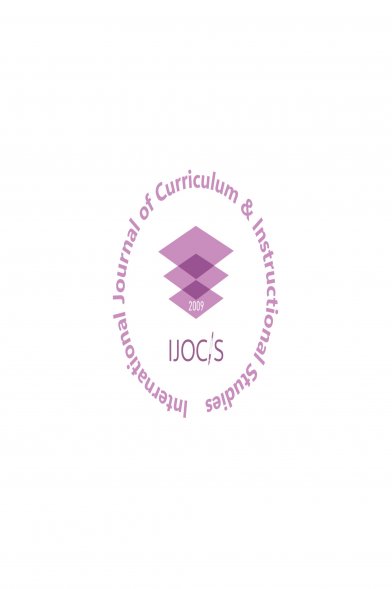SUPSKY Eğitim Programı Tasarımı Modeli
SUPSKY Curriculum Design Model
___
- Bone, J. and Guthrie, H. (1990). Approaches to Curriculum Development: A discussion Paper.
- Carlson, J. Davis, A. E. Buxton, C. (2014). ‘’Supporting the Implementation of NGSS Through Research: Curriculum Materials. Retrieved from http://www.narst.org/NGSSpapers/Curriculum_Materials_061914.pdf on 15.05.2015.
- Corbett, K., Gardner, C. and Taffaro A. J. Jr., (2013) “Piloting a New Curriculum: A View from the Trenches” http://www.nicerc.org/wp-content/uploads/2014/12/TrenchesFinal.pdf Retrieved from on 23.05.2015.
- Demirel, Ö. (2012). Eğitimde Program Geliştirme. Ankara: Pegem Publishing.
- Department of Education and Children’s Services (2004). ‘’ Choosing and Using Teaching and Learning Materials.’’ Retrieved from http://www.decd.sa.gov.au/policy/files/links/Choose_use_booklet_FA.pdf on 15.05.2015.
- Gibson, J.M.E. (1998). Using the Delphi Technique to Identify the Content and Context of Nurses’ Continuing Professional Development Needs, Journal of Clinical Nursing, 1998, 7: 451-459.
- Gözütok, F. D. (1999). Program Değerlendirme. Cumhuriyet Döneminde Eğitim II, (p:160-174) Ankara: MEB Press.
- Guide to Curriculum Development. (2014). A Guide to Curriculum Development: Purposes, Practices, Procedures. Retrieved from http://www.sde.ct.gov/sde/lib/sde/pdf/curriculum/currgde_generic/curguide_generic.pdf on 15.05.15.
- Henson, K. T. (1995). Curriculum Development For Education Reform. Boston, MA: Pearson/Allyn and Bacon.
- Hunkins, F. P. & Hammill, P. A. (1994). Beyond Tyler and Taba: Reconceptualizing the curriculum process. Peabody Journal of Education,69(3), 4-18.
- Kıldan, O. and Ünver, N. (2011). Öğretim Araçları. Doğanay, A. (Edt.) Öğretim İlke ve Yöntemleri. Ankara: PegemA Publishing 6th Edition.
- Kiai, A. W. and Maroko, G. M. (2013). ‘’Textbook Selection Experience Among Secondary School Teachers Of English In Kenya.’’ International Journal of Education and Research Vol. 1 No. 12 December 2013.Retrieved from http://www.ku.ac.ke/schools/humanities/images/stories/docs/Research/Textbook-selectionexperiences-among-secondary-school-teachers-of-english-in-kenya.pdf on 12.03.2015.
- Koszalka, T. A. (2001). Effect of Computer-Mediated Communications on Teachers’ Attitudes Toward Using Web Resources in the Classroom. Journal of Instructional Psychology, 28 (2), p: 95- 103.
- Linstone, H. A. and Turoff (2002) The Delphi Method, Techniques and Applications
- Lunenburg, F. C. (2011). Curriculum Development: Inductive Models. Schooling. Volume 2, No 1
- Mooney, N. J. and Mausbach, A. T. (2008). Align the Design: A Blueprint for School Improvement. USA: Association for Supervision and Curriculum Development.
- Olshfski, D. and Joseph, A. (1991) Assessing Training Needs of Executives Using the Delphi Technique, Public Productivity & Management Review, Vol. 14, No. 3 (Spring, 1991), pp. 297- 301. http://www.jstor.org/stable/3380739
- Ornstein, A. and Hunkins, F. (2009) Curriculum Design. In Curriculum: Foundations, Principles and Issues (5th Ed.). Boston, MA: Pearson/Allyn and Bacon.
- Özdemir, S. M. (2009). Eğitimde Program Değerlendirme ve Türkiye'de Eğitim Programlarını Değerlendirme Çalışmalarının İncelenmesi, Yüzüncü Yıl University, Journal of Faculty of Education. 1 (2), p: 126-149.
- Semerci, Ç. and Semerci, N. (2001) Program Geliştirmede Delphı, Dacum Ve Meslek Analizi (Delphi, Dacum and Task Analysis in Curriculum Development), Fırat University Journal of Social Science Cilt: 11 Sayı: 2, Sayfa: 241-250, ELAZIĞ-2001
- Senyshyn, Roxanna M.,(2002) "Cross-Cultural Competencies in International Management Curricula: A Delphi Study of FacultyPerspectives. " PhD diss., University of Tennessee, 2002. http://trace.tennessee.edu/utk_graddiss/2209
- Sönmez, V. (2010). Program Geliştirmede Öğretmen Elkitabı. Ankara: Anı Publishing 16th. Edition.
- Tuncer, M., Bal, S., Özüt, A. and Köse, N. (2012). Ortaöğretim Kurumları Öğrenme Ortamlarının Çeşitli Değişkenler Açısından Değerlendirilmesi. Gaziantep University Journal of Social Sciences. 11 (1). p: 85-101
- Turgut, M. F. (1983). Program Değerlendirme. Cumhuriyet Döneminde Eğitim, (p: 215–234). İstanbul: Milli Eğitim Press.
- Tyler, W. Ralph. (1993). Basic Principles of Curriculum and Instruction. The University of Chicag o Press,.
- U.S. Department of Health and Human Sevices. (2014). Tips and Recommendations for Successfully Pilot Testing Your Program. Retrieved from http://www.hhs.gov/ash/oah/oahinitiatives/teen_pregnancy/training/tip_sheets/pilot-testing-508.pdf on 27.12.2014.
- ISSN: 2146-3638
- Yayın Aralığı: 2
- Başlangıç: 2011
- Yayıncı: Eğitim Programları ve Öğretim Derneği
Öğretmen Adaylarının Öz-Yönetimli Öğrenme Becerilerine İlişkin Görüşlerinin İncelenmesi
İlkay AŞKIN TEKKOL, MELEK DEMİREL
Öğretmenlerin Mesleki Gelişimine İlişkin Milli Eğitim Şurası Kararlarının İncelenmesi
MEHMET EROĞLU, RAMAZAN ÖZBEK, CEM ŞENOL
Öğretmen Adaylarının Yaratıcılık Algılarının Çeşitli Değişkenlere Göre İncelenmesi
Öğrencilerin Öz-Düzenlemeli Öğrenme Becerilerinin Gelişiminde Anne-Babaların Rolü
MUHAMMET FATİH DOĞAN, ÇİĞDEM ŞAHİN TAŞKIN
Türkiye’de Program Değerlendirme Çalışmalarında Eğilimler ve Sorunlar: Alan Uzmanlarının Gözüyle
DİLRUBA KÜRÜM YAPICIOĞLU, DERYA ATİK KARA, DEMET SEVER
HANİFE AKAR, Filiz Keser ASCHENBERGER
Öğretmen Adaylarının Yaşam Boyu Öğrenme Bağlamında Dijital Yeterliklerinin İncelenmesi
SUPSKY Eğitim Programı Tasarımı Modeli
Kıymet SELVİ, DERYA UYSAL, MUSTAFA POLAT, TUĞBA SÖNMEZ AKALIN, Canan KÖSE, Nihan YETİM
DAPDEM Öğretim Programı Değerlendirme Ölçütlerinin Geliştirilmesi
